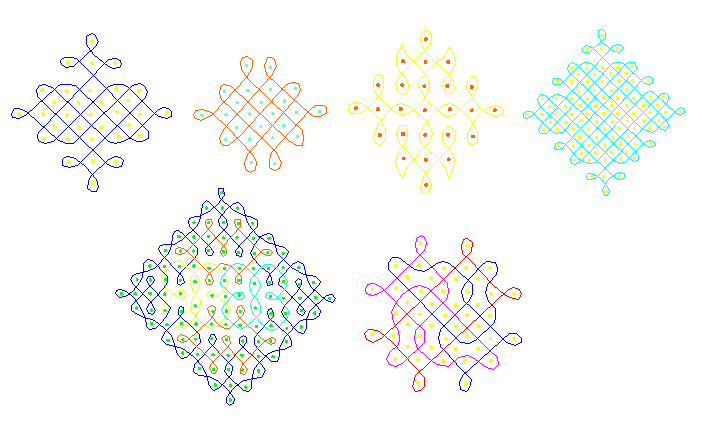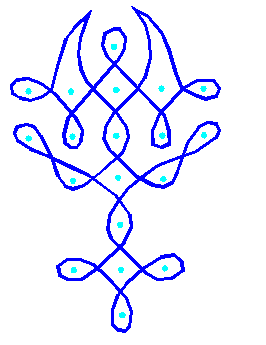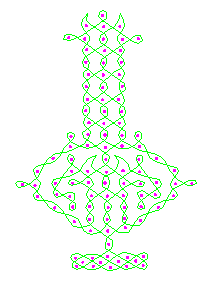

TAMIL
THRESHOLD
DESIGNS
"During the harvest month of Margali (mid- December to mid-January), the Tamil women in South India used to draw designs in front of the thresholds of their houses every morning. Margali is the month in which all kinds of epidemics were supposed to occur. Their designs serve the purpose of appeasing the god Siva who presides over Margali. In order to prepare their drawings, the women sweep a small patch of about a yard square and sprinkle it with water or smear it with cow-dung. On the clean, damp surface they set out a rectangular reference frame of equidistant dots. Then the curve(s) forming the design is (are) made by holding rice-flour between the fingers and, by a slight movement of them, letting it fall out in a closed, smooth line, as the hand is moved in the desired directions. The curves are drawn in such a way that they surround the dots without touching them."
P.Gerdes: Reconstruction and extension of lost symmetries:
examples from the Tamil of South India,
Computers Math. Applic. 17, 4-6 (1989), 791-813.

The ideal design is composed of a single continuous line. Names given to designs formed of a single "never-ending" line are normally pavitram, meaning "ring" and Brahma-mudi or "Brahma's knot". The object of the pavitram is to scare away giants, evil spirits, or devils.
Is it not strange that the designs composed of two or several superimposed closed paths, is nevertheless called pavitram? Maybe the designs formed of a few never-ending lines are just degraded versions of originaly single closed path figure?
Is it possible to construct a design rather similar to them, but made out of only one line? Slightly changing them, try to revert such imperfect, multi-linear designs into the ideal ones.
